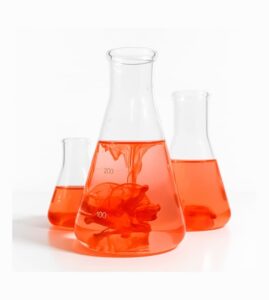Embarking on a scientific journey with laboratory glassware demands not only precision and expertise but also a deep understanding of its limits under various conditions. Have you ever pondered the resilience of your beakers and flasks against extreme heat and pressure? What makes one type of glassware endure more than another in demanding laboratory environments? These questions are not just academic curiosities but are vital for ensuring the success and safety of any laboratory experiment.
Laboratory glassware is designed to withstand specific ranges of temperature and pressure, based on its material and manufacturing process. Understanding these limitations is crucial for safe and efficient lab work. This guide delves into the world of laboratory glassware, unraveling the mysteries of temperature and pressure resistance. Discover how material choices, manufacturing nuances, and the right selection strategies can transform your laboratory experience. Let’s navigate through the intricate balance of science and safety, ensuring your laboratory endeavors are as secure as they are groundbreaking.
Maintaining the integrity of your experiments and safety in the lab starts with understanding these constraints.
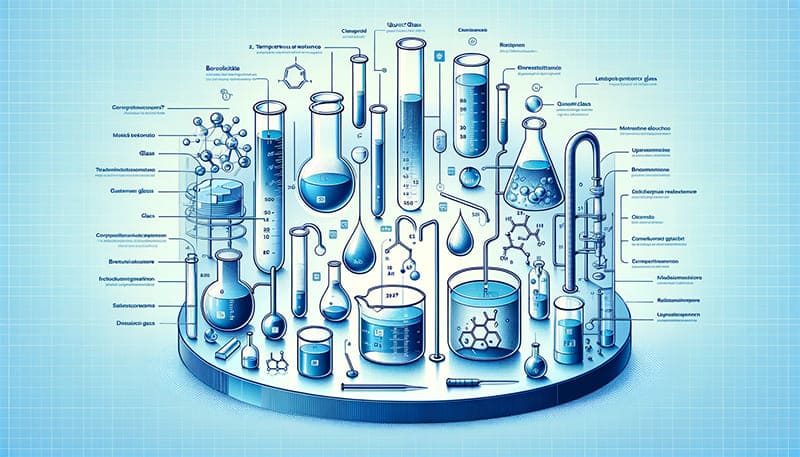
What Determines the Temperature and Pressure Resistance of Laboratory Glassware?
Material and Manufacturing
The type of glass and its manufacturing process are the primary determinants of a glassware’s temperature and pressure thresholds. Common lab glassware, like beakers and test tubes, generally withstands temperatures up to around 200°C. However, specialized glassware, such as high-temperature reactors, can endure temperatures up to 1000°C or more.
The temperature resistance of laboratory glassware is significantly influenced by both the type of material used and the manufacturing processes applied. Here’s a detailed look at how different materials and manufacturing techniques impact the temperature tolerance of lab glassware:
Different Types of Glass Materials and Their Temperature Tolerances:
- Borosilicate Glass: This is one of the most common materials used for making laboratory glassware. Borosilicate glass is known for its excellent resistance to thermal shock and chemical corrosion. It generally can withstand temperatures up to about 500°C, making it suitable for a wide range of laboratory applications, including those involving high-temperature chemicals.
- Soda-Lime Glass: This type of glass is less resistant to high temperatures and chemical attack compared to borosilicate glass. Soda-lime glassware typically handles temperatures up to 150°C. It is commonly used for containers like bottles and jars rather than for high-temperature applications.
- Quartz Glass: Known for its superior temperature resistance, quartz glass can withstand temperatures up to about 1000°C. It is used in applications requiring high purity and resistance to extreme temperatures, such as in semiconductor processing and high-temperature chemistry.
- Lead Glass: While offering high optical clarity, lead glass is not as resistant to high temperatures as borosilicate or quartz glass. It is more commonly used in applications requiring radiation shielding.
- Aluminosilicate Glass: This type of glass, known for its strong resistance to thermal shock and high temperatures, can typically withstand temperatures up to 600-700°C. It’s used in more demanding laboratory conditions where both chemical resistance and high-temperature endurance are required.
Impact of Manufacturing Processes:
- Annealing: Annealing involves slowly cooling hot glassware to relieve internal stresses. This process enhances the thermal shock resistance of the glass, making it less likely to crack under rapid temperature changes.
- Tempering: This process involves heating the glass to a certain point and then rapidly cooling it. Tempered glass is much stronger and more resistant to thermal shocks than annealed glass. However, it is not commonly used for laboratory glassware due to the potential for it to shatter into small pieces under extreme conditions.
- Surface Strengthening: Some glassware undergoes chemical or thermal surface strengthening processes to improve its durability and resistance to thermal shock.
- Thickening: Increasing the thickness of the glass can enhance its ability to withstand higher pressures and temperatures, but this also makes the glassware heavier and more cumbersome to use.
- Reinforcement: Some laboratory glassware is reinforced with a plastic or polymer coating. This doesn’t necessarily increase the temperature tolerance, but it can help contain the glass in case of breakage.
In summary, both the material composition and the manufacturing process play crucial roles in determining the temperature and pressure resistance of laboratory glassware. The choice of material and the specific manufacturing techniques used are tailored to meet the requirements of different laboratory applications, balancing factors like temperature tolerance, chemical resistance, and physical durability.
Glassware Size and Design
The pressure resistance of laboratory glassware is significantly affected by both its size and design. Smaller glassware pieces, like test tubes, typically have lower pressure resistance (around 1 atmosphere), while larger, more structurally sound pieces like flasks can withstand higher pressures.Different sizes and shapes of glassware are designed to withstand varying levels of pressure based on their intended use and structural characteristics. Here’s a closer look at how size and design influence the pressure tolerance of lab glassware:
Impact of Glassware Size on Pressure Resistance:
- Small Glassware (e.g., Test Tubes, Small Vials): These are typically designed for low-pressure applications. The pressure resistance of small glassware like test tubes is usually around 1 atmosphere (atm) or slightly higher. They are ideal for general laboratory use where significant pressure build-up is not expected.
- Medium-sized Glassware (e.g., Erlenmeyer Flasks, Beakers): Medium-sized glassware can generally withstand slightly higher pressures than small glassware, often up to 2-3 atm. Their broader base and conical or cylindrical shapes provide better stability and pressure resistance for medium-scale reactions.
- Large Glassware (e.g., Large Flasks, Reaction Vessels): Large pieces of glassware are often designed to withstand higher pressures, sometimes up to 5 atm or more. Their design often includes thicker walls and stronger joints to handle increased stress.
Influence of Design and Manufacturing on Pressure Resistance:
- Wall Thickness: Thicker walls in glassware provide greater resistance to pressure. This is particularly important in large containers or vessels designed for reactions that generate significant pressure.
- Reinforcement: Some glassware is reinforced with additional materials, like plastic or metal cladding, to increase its pressure resistance. This is especially common in glassware used for pressurized or vacuum applications.
- Shape and Structural Design: The shape of glassware affects its ability to withstand pressure. Round-bottom flasks, for instance, can typically handle higher pressures than flat-bottom flasks due to the distribution of stress over a curved surface.
- Joints and Seals: The design of joints and seals in glassware also influences its pressure tolerance. Glassware with ground-glass joints or specialized sealing mechanisms can often withstand higher pressures compared to those with simple stoppers or caps.
- Safety Features: Some high-pressure glassware is designed with safety features like pressure release valves or burst disks to prevent accidental over-pressurization.
In summary, the size and design of laboratory glassware play crucial roles in determining its pressure resistance. Smaller glassware is generally suited for low-pressure applications, while larger and more robustly designed glassware can handle higher pressures. The wall thickness, reinforcement, shape, and quality of joints and seals are all critical factors that contribute to the overall pressure resistance of the glassware. These design elements are tailored to meet the specific needs of different laboratory procedures, ensuring both safety and functionality in high-pressure applications.
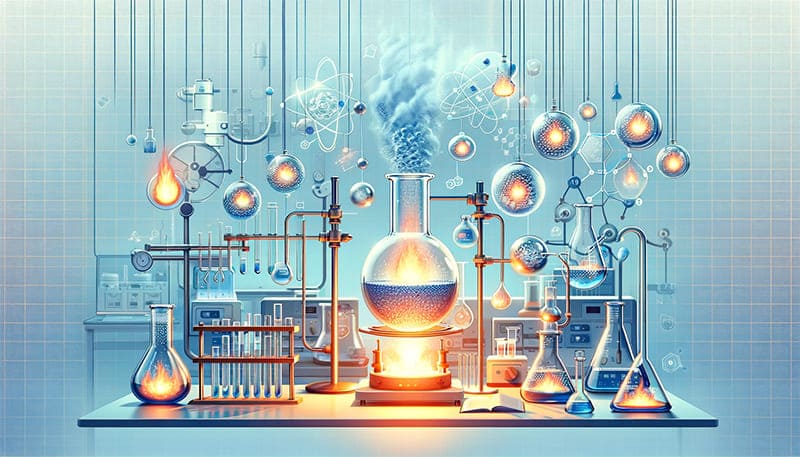
How Do Usage Factors Impact Glassware Resistance?
The resistance of laboratory glassware to temperature and pressure is not only a function of its material and design but is also significantly influenced by how it is used in the laboratory. Usage factors like heating and cooling rates, as well as the rate of pressure changes, play crucial roles in determining the durability and safety of glassware. Here’s a more detailed examination of these factors:
Heating and Cooling Rates
- Thermal Shock: Glassware is susceptible to thermal shock, which occurs when it experiences rapid temperature changes. This can lead to stress fractures or even shattering. For instance, placing hot glassware on a cold surface or adding cold liquid to a hot container can cause immediate breakage.
- Optimal Heating Practices: To minimize the risk of thermal shock, glassware should be heated gradually. Using devices like heating mantles, water baths, or slowly increasing the flame on a Bunsen burner can help distribute heat evenly and reduce stress.
- Cooling Considerations: Similarly, when cooling glassware, it’s important to allow it to cool down gradually. Rapid cooling, such as immersing hot glassware in cold water, should be avoided. Room temperature or lukewarm baths can be used for controlled cooling.
- Heat Distribution: Uneven heating can also stress glassware. Using a stirrer or a shaking mechanism can help maintain uniform temperature within the solution, thus reducing localized stress points on the glass.
Pressure Changes
- Vacuum Applications: In vacuum applications, glassware can implode if the pressure is reduced too rapidly. This is due to the external atmospheric pressure exceeding the internal pressure dramatically.
- Pressurization Practices: When pressurizing glassware, the pressure should be increased slowly to allow the glass to adjust and avoid creating stress points. Sudden increases in pressure can lead to catastrophic failure of the glassware.
- Pressure Release Mechanisms: It’s crucial to have proper pressure release mechanisms in place. This includes safety valves or controlled venting systems that can prevent over-pressurization.
- Monitoring and Control: Regular monitoring of pressure and temperature with appropriate gauges and controls is essential. This helps in maintaining conditions within the safe operating limits of the glassware.
Combined Effects of Temperature and Pressure
- Simultaneous Stresses: When glassware is subjected to both high temperature and pressure changes simultaneously, the stress on the material increases exponentially. This requires even more careful control of heating/cooling rates and pressure changes.
- Material Fatigue: Repeated cycles of heating, cooling, pressurization, and depressurization can lead to material fatigue over time. This can reduce the overall lifespan of the glassware and its resistance to temperature and pressure.
In conclusion, the resistance of laboratory glassware to temperature and pressure is highly dependent on usage factors. Proper handling techniques, gradual changes in temperature and pressure, and awareness of the material’s limitations are key to ensuring the longevity and safety of glassware in laboratory settings. These practices help in preventing accidents, such as cracks or shattering of the glass, thereby maintaining a safe and efficient laboratory environment.

How to Select the Right Glassware for Your Experiments?
Selecting the right glassware for laboratory experiments is a critical decision that impacts both the safety and the success of the experimental procedures. When considering temperature and pressure requirements specifically, several additional factors should be taken into account to ensure the correct selection of glassware. Here’s a more comprehensive approach to selecting the right glassware for your experiments:
1. Assessing Experiment Requirements
- Understand the Nature of the Experiment: Clearly define the chemical reactions or processes that will occur. This includes understanding the chemicals involved, their reactions, and the conditions under which they react, such as temperature and pressure.
- Determine Temperature and Pressure Ranges: Identify the maximum temperature and pressure your experiment will reach. This involves not just the intended operating conditions but also considering any potential for unexpected increases in temperature or pressure.
- Consider Chemical Compatibility: Ensure that the glassware material is compatible with the chemicals used in the experiment. Certain chemicals can react with glass or weaken it under specific conditions.
2. Checking Manufacturer Specifications
- Reference Material Specifications: Look for manufacturer data that specifies the type of glass, its thermal expansion coefficient, and its resistance to temperature changes and pressure.
- Verify Temperature and Pressure Limits: Check the manufacturer’s guidelines for the maximum temperature and pressure each piece of glassware can safely withstand. This information is often found in product catalogs or on the manufacturer’s website.
- Look for Certification and Standards Compliance: Choose glassware that meets recognized safety and quality standards. Certifications can indicate adherence to industry standards for material strength and durability under specific conditions.
3. Matching Glassware to Experiment Conditions
- Select Glassware Based on Highest Expected Temperature: If your experiment involves high temperatures, opt for glassware made from materials like borosilicate, which has high thermal resistance. For extremely high temperatures, quartz glassware may be necessary.
- Choose Glassware Suitable for Pressure Demands: For experiments involving pressure, such as vacuum distillation or pressurized reactions, select glassware designed to withstand such conditions. This may include thicker-walled glassware or glassware reinforced with additional materials.
- Account for Thermal Shock Resistance: If your experiment involves rapid heating and cooling, select glassware that has high resistance to thermal shock. Gradual temperature change glassware might not be suitable for experiments with rapid temperature fluctuations.
4. Considering Additional Safety Factors
- Plan for Overpressure and Overtemperature Scenarios: Have safety measures in place for unexpected overpressure or temperature spikes. This can include using safety shields and choosing glassware with safety release features.
- Regular Inspection and Maintenance: Regularly inspect glassware for signs of stress, such as cracks or cloudiness, which can compromise its integrity under high temperature or pressure.
- Training and Handling Practices: Ensure that all personnel are trained in the proper handling and use of high-temperature and high-pressure glassware. Proper handling can significantly reduce the risk of accidents.
In conclusion, selecting the right glassware for laboratory experiments, especially considering temperature and pressure requirements, involves a thorough understanding of the experiment’s conditions, careful reference to manufacturer specifications, and an awareness of the safety factors involved. By methodically assessing these aspects, you can ensure the safe and effective conduct of your laboratory experiments.
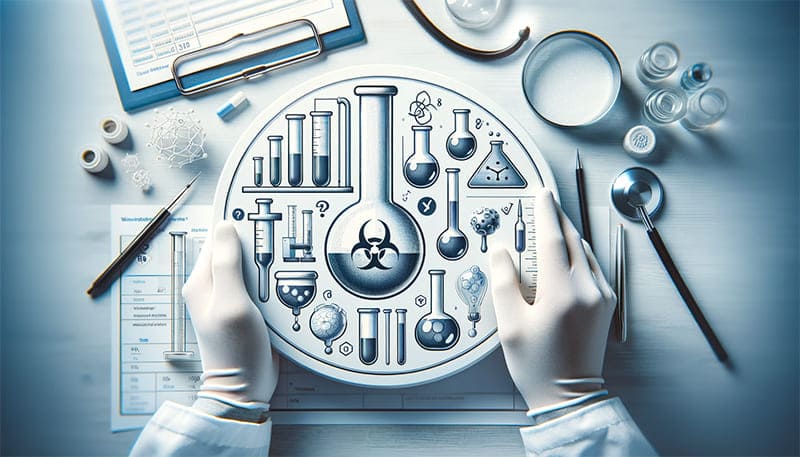
What Precautions Should Be Taken When Using Glassware at High Temperatures and Pressures?
When using laboratory glassware in conditions involving high temperatures and pressures, it’s crucial to take specific precautions to ensure both the integrity of the experiments and the safety of the laboratory personnel. Here are expanded guidelines for safely using glassware under these demanding conditions:
Selecting the Right Glassware
- Choose Material Wisely: For high-temperature applications, borosilicate glass is often preferred due to its low thermal expansion. For even higher temperatures, quartz glassware may be necessary.
- Check for Pressure Resistance: Ensure that the glassware is designed to withstand the expected pressure levels. This might include choosing glassware with thicker walls or reinforced structures.
- Review Manufacturer’s Guidelines: Always consult the manufacturer’s specifications for the maximum temperature and pressure limits of the glassware.
Gradual Temperature Changes
- Controlled Heating: Use a gradual heating process to prevent thermal shock. Devices like heating mantles, hot plates, or oil baths can provide even heat distribution.
- Avoid Direct Flame: Unless the glassware is specifically designed for it, avoid using a direct flame as it can create hotspots and uneven heating.
- Planned Cooling: Allow glassware to cool down gradually to room temperature before moving it to a cooler environment. Rapid cooling can be as harmful as rapid heating.
Monitoring Pressure Levels
- Use Pressure Gauges: Always use accurate pressure gauges to continuously monitor the pressure within the system, especially in sealed apparatus.
- Install Safety Valves: Equip your setup with appropriate safety valves or burst disks to automatically relieve pressure if it exceeds safe limits.
- Venting Gas Safely: If the experiment produces gas, ensure that there is a safe and controlled way for the gas to vent.
Additional Safety Measures
- Personal Protective Equipment (PPE): Always wear appropriate PPE, including heat-resistant gloves, safety goggles, and lab coats.
- Securely Fasten Glassware: Use clamps and stands to securely fasten the glassware, preventing it from tipping or falling, especially under pressure.
- Regular Inspections: Inspect the glassware for any signs of stress, wear, or damage before and after each use. Discard or repair any glassware that shows signs of damage.
- Training and Awareness: Make sure that everyone involved in the experiment is properly trained and aware of the risks and safety procedures associated with high-temperature and high-pressure experiments.
- Emergency Procedures: Ensure that emergency protocols are in place and that all lab personnel are familiar with them. This includes knowing the location and proper use of safety showers, eyewash stations, and fire extinguishers.
- Adequate Ventilation: Perform experiments in a well-ventilated area or under a fume hood to ensure that any gases or fumes produced are safely extracted.
By adhering to these comprehensive safety precautions, the risks associated with using glassware at high temperatures and pressures can be significantly reduced. It’s crucial to prioritize safety and caution in such experimental setups, as the hazards can be severe.
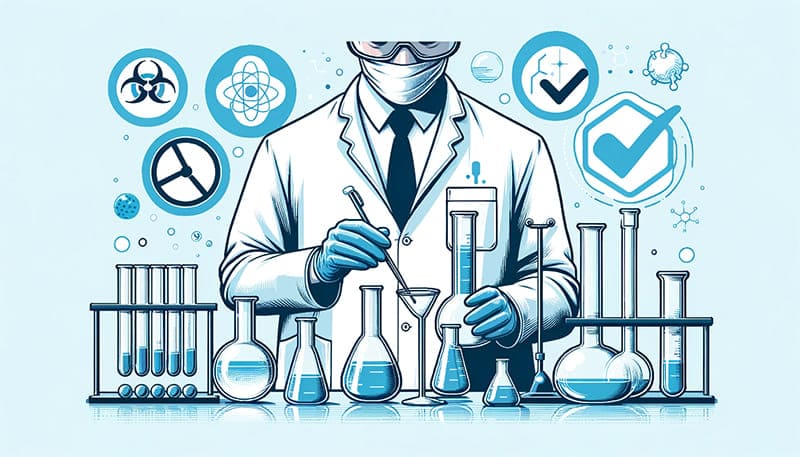
Safety Tips for Using Laboratory Glassware
Using laboratory glassware, particularly when working with extreme temperatures and high pressures, requires a heightened level of caution and awareness to ensure safety in the laboratory. Here are expanded safety tips and considerations for using laboratory glassware under such conditions:
Avoid Rapid Temperature Changes
- Implement Controlled Heating/Cooling: Use heating mantles, hot plates, or water baths for controlled heating. Avoid direct flame unless the glassware is designed for it. Similarly, for cooling, allow the glassware to reach room temperature naturally before placing it in cooler environments.
- Use Thermal Insulation: When working with very high temperatures, use thermal insulating materials to handle glassware, and consider shielding to protect against radiant heat.
Regularly Inspect Glassware
- Routine Checks for Damage: Before each use, inspect glassware for any signs of damage, such as chips, cracks, or scratches. Even minor flaws can lead to failure under high stress conditions.
- Monitor for Stress Signs: Look for signs of stress in glassware, like cloudiness or streaks, which can indicate weakening of the material.
Understand the Limits
- Adhere to Manufacturer Guidelines: Always stay within the temperature and pressure specifications provided by the manufacturer. If the limits are unknown, consult the supplier or opt for glassware with clearly stated tolerances.
- Consider Safety Margins: It’s prudent to operate well within the maximum specified limits to account for any unforeseen fluctuations in temperature or pressure.
Additional Safety Considerations for High-Temperature and High-Pressure Glassware
- Use Appropriate Personal Protective Equipment (PPE): Always wear appropriate PPE, such as safety goggles, lab coats, and heat-resistant gloves, especially when handling hot glassware or conducting high-pressure experiments.
- Pressure Release Mechanisms: Ensure that any high-pressure apparatus is equipped with pressure release valves or burst disks to prevent accidental over-pressurization.
- Secure Mounting and Clamping: High-pressure glassware should be securely mounted and clamped to prevent movement or tipping during the experiment.
- Ventilation and Fume Hoods: Conduct experiments that release gases or involve high heat under a fume hood to ensure adequate ventilation and protection from fumes.
- Emergency Preparedness: Have an emergency plan in place, including ready access to safety showers, eyewash stations, and fire extinguishers. Train all laboratory personnel on emergency procedures.
- Avoid Working Alone: When conducting experiments with extreme conditions, work with a partner or have someone nearby in case of emergencies.
- Proper Cleaning Procedures: After use, clean glassware appropriately. Certain cleaning agents may not be suitable for all types of glassware, especially those used in high-temperature or high-pressure environments.
By following these comprehensive safety tips and practices, the risk of accidents and injuries while using laboratory glassware, particularly under high-temperature and high-pressure conditions, can be significantly minimized. Safety in the laboratory is paramount, and a proactive approach to handling and maintaining glassware is crucial for a secure working environment.

Frequently Asked Questions About Temperature and Pressure in Laboratory Glassware
How Does Glass Composition Affect Its Tolerance?
Different types of glass, like borosilicate or soda-lime, have varying thermal and pressure resistances. Borosilicate glass, for example, is known for its higher resistance to thermal shock.
Can Glassware Be Strengthened Post-Manufacture?
Some glassware undergoes processes like annealing or tempering to enhance its thermal and pressure resistance. However, these processes are typically done by the manufacturer and not in the laboratory setting.
How Should Glassware Be Handled During Extreme Temperature Experiments?
Always use appropriate protective gear, like heat-resistant gloves, and ensure that the glassware is heated or cooled slowly to avoid thermal shock.
What Happens When Glassware is Exposed to Excessive Temperature or Pressure?
Exceeding the recommended limits can lead to glassware failure, which can mean cracks, shattering, or implosion, posing serious safety risks.
Is It Safe to Use Cracked or Chipped Glassware?
Using damaged glassware is not recommended, as it significantly reduces the item’s ability to withstand temperature and pressure changes.
What Precautions Should Be Taken When Heating Glassware?
When heating glassware, do so gradually. Avoid direct flame contact with the glass and use a water bath or heating mantle if necessary. This reduces the risk of thermal stress.
How to Safely Cool Down Heated Glassware?
Allow glassware to cool down naturally. Do not expose hot glassware to cold surfaces or liquids, as this can cause it to crack or shatter due to rapid thermal contraction.
Can All Glassware Be Used in a Microwave?
Not all laboratory glassware is microwave-safe. It’s important to check the manufacturer’s specifications or use microwave-specific glassware to avoid accidents.
Is It Safe to Freeze Glassware?
Freezing glassware can cause it to crack, especially if it’s not designed for low temperatures. Gradual cooling and using appropriate glassware are key.

Final Thoughts
Balancing Experimentation and Safety
While pushing the boundaries of scientific experimentation is essential, it’s equally important to balance this with the safety constraints of the tools used, such as laboratory glassware.
Continuous Learning and Adaptation
As technology evolves and new types of glassware are developed, staying informed and adapting laboratory practices accordingly is crucial for any scientific endeavor.
Conclusion
In conclusion, mastering the art of using laboratory glassware in extreme conditions is a dance of precision, safety, and scientific insight. The journey we’ve embarked on in this guide highlights not just the technicalities but the essence of safe laboratory practices. As we continue to push the boundaries of scientific exploration, let’s carry the torch of knowledge with respect for the tools that make discoveries possible. Remember, the power of successful experimentation lies in our hands, guided by our understanding and respect for the glassware we use. Keep innovating, stay curious, and above all, prioritize safety in every experiment. This guide is your ally in the ever-evolving landscape of laboratory science, where each experiment is a step towards new horizons of knowledge and discovery.



